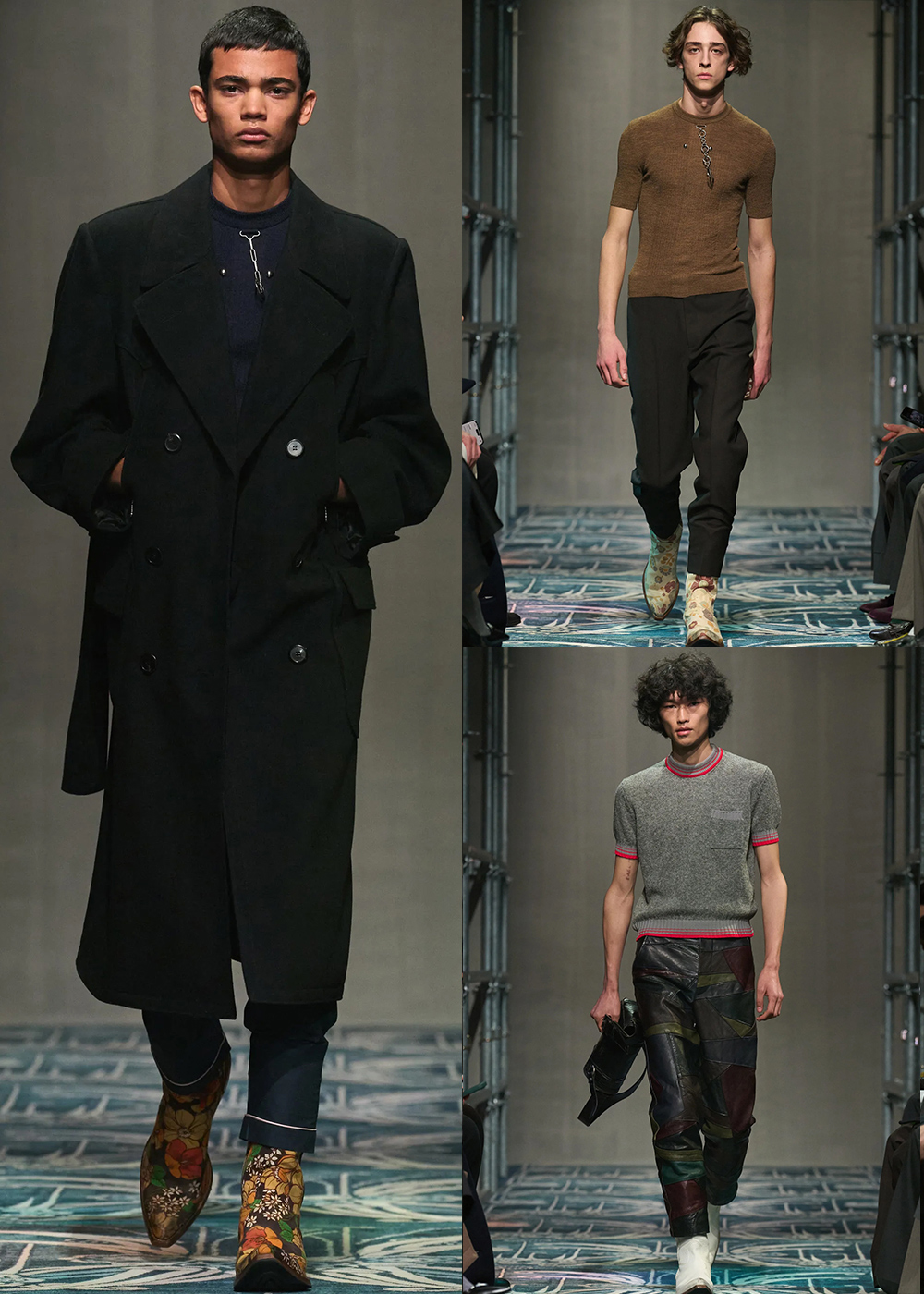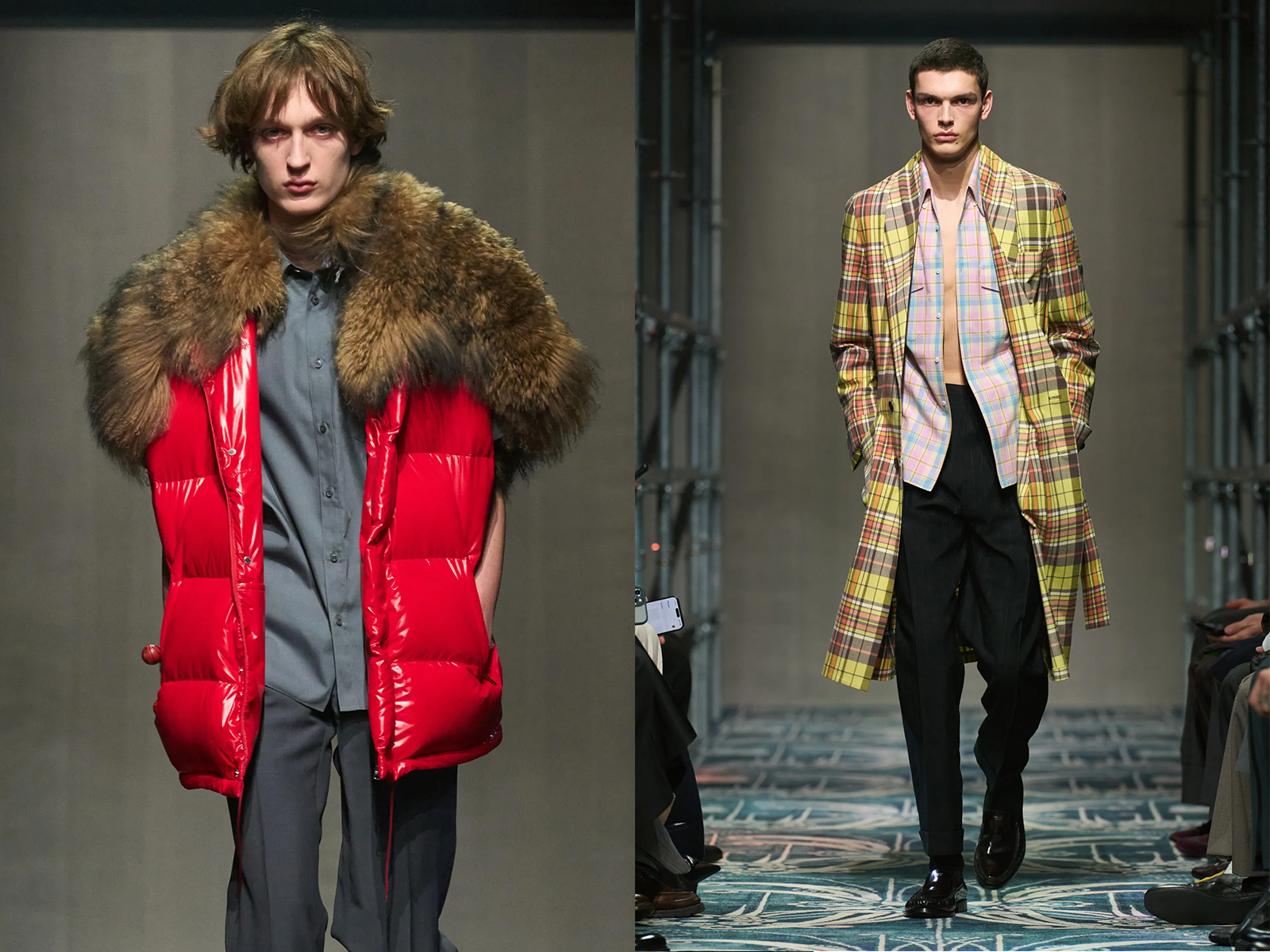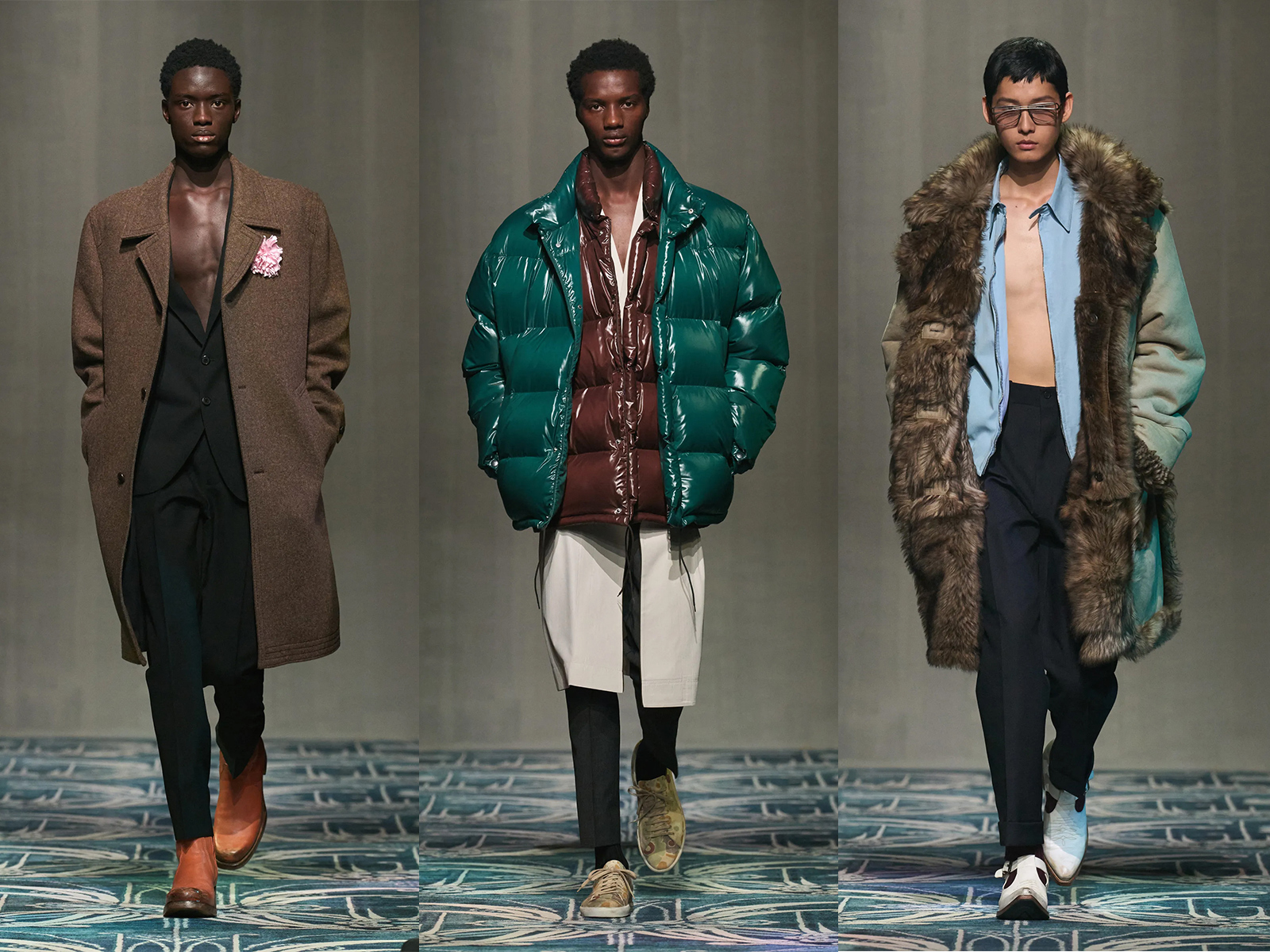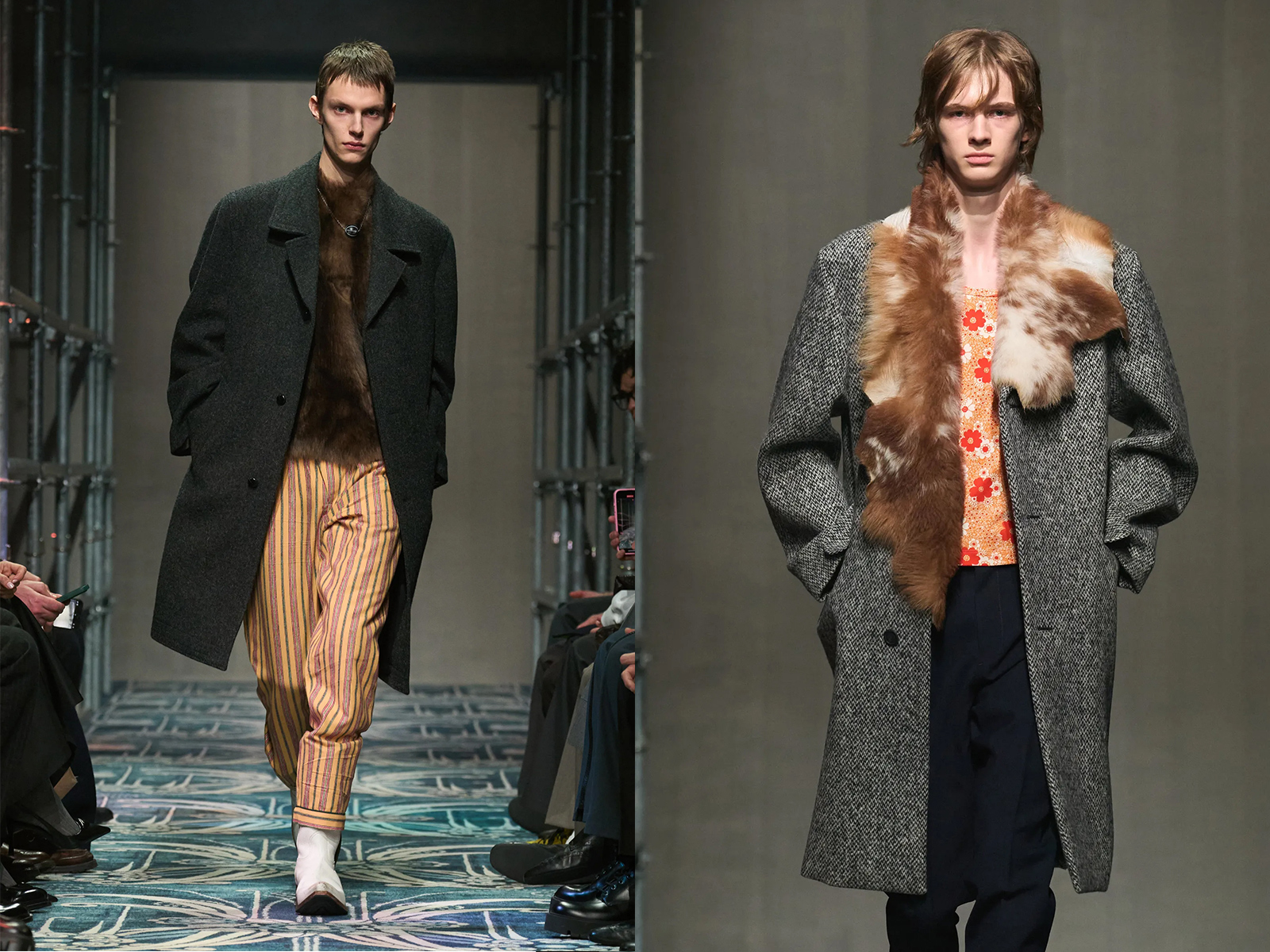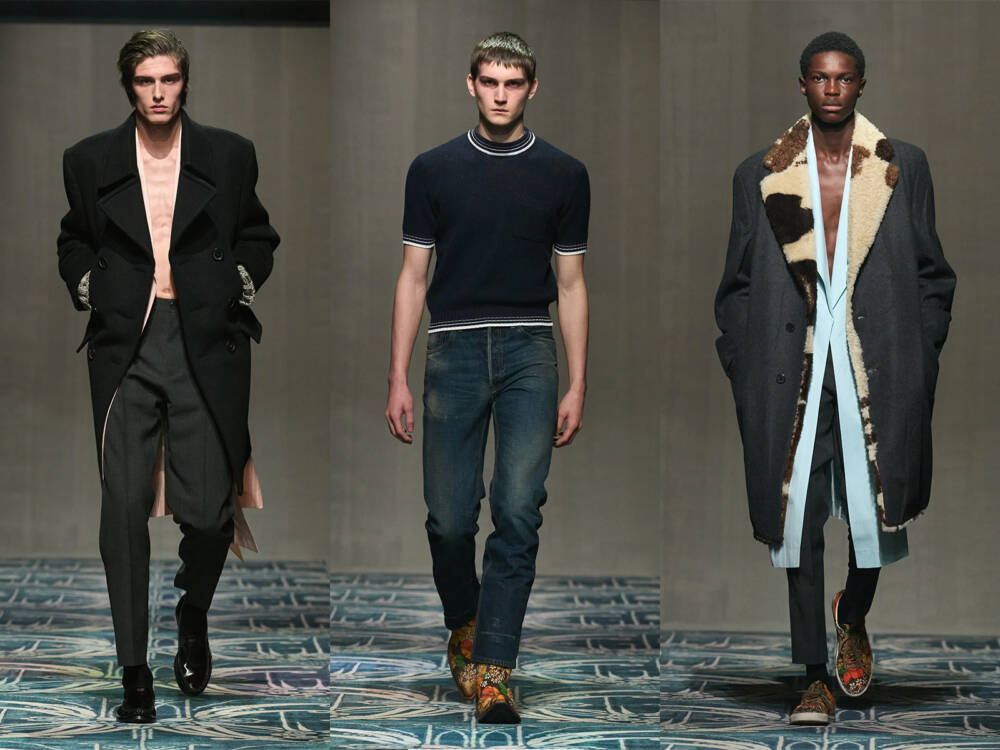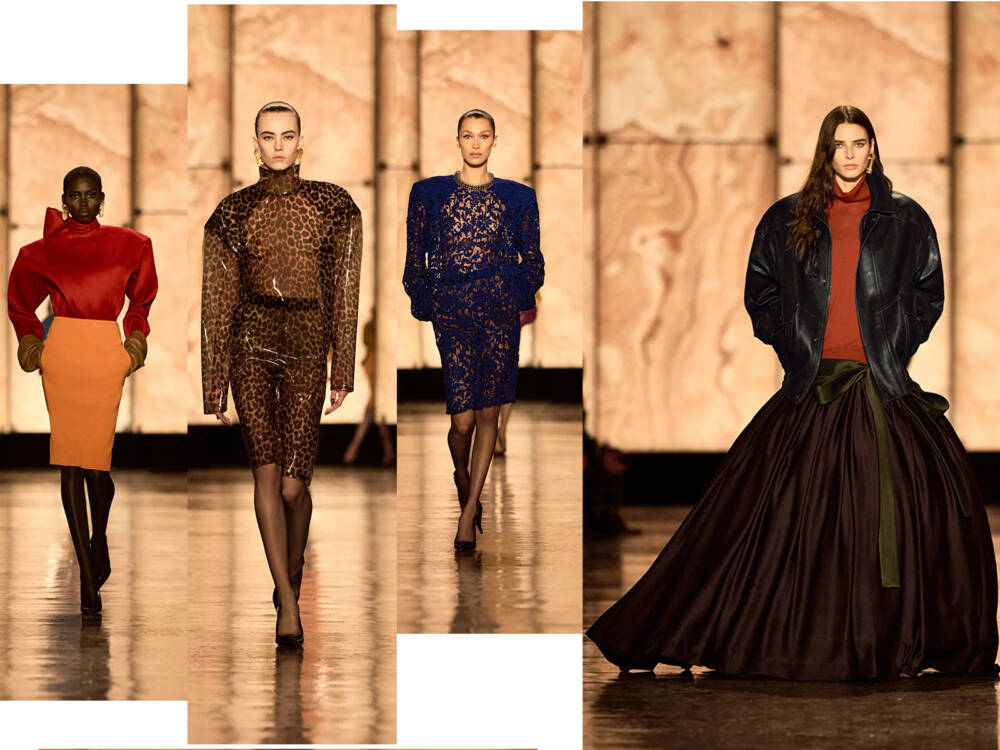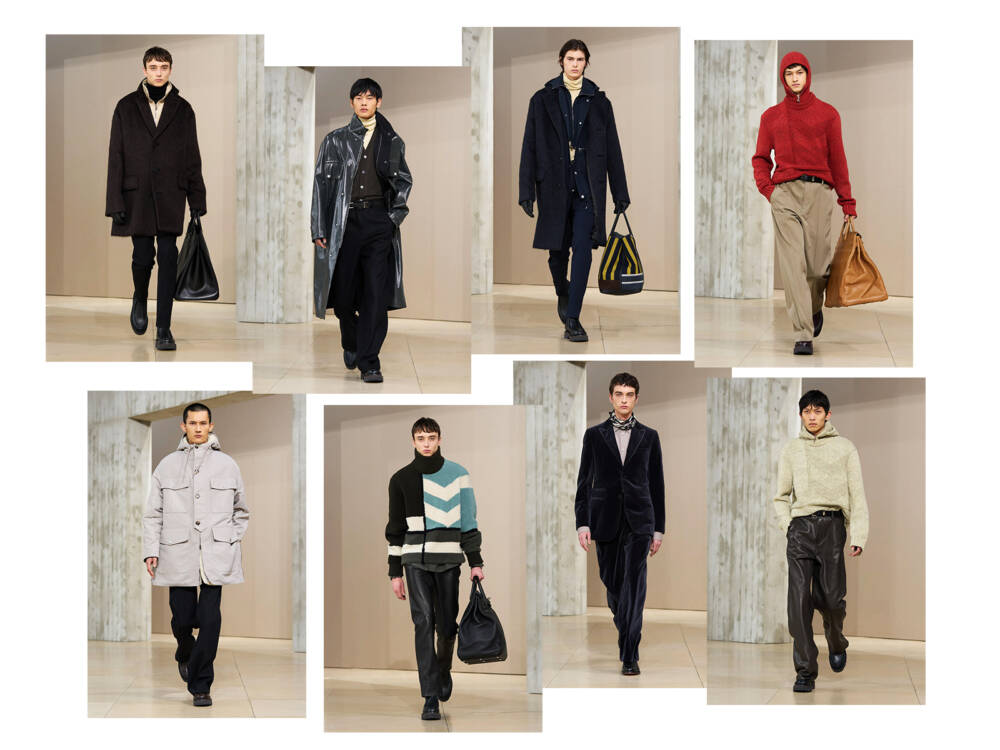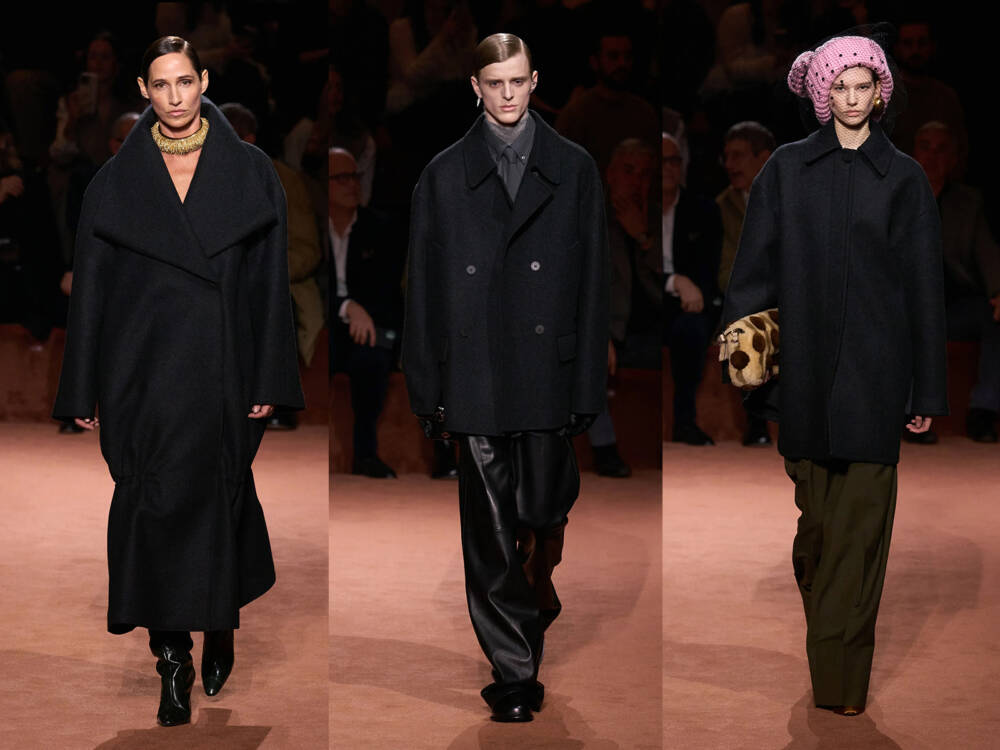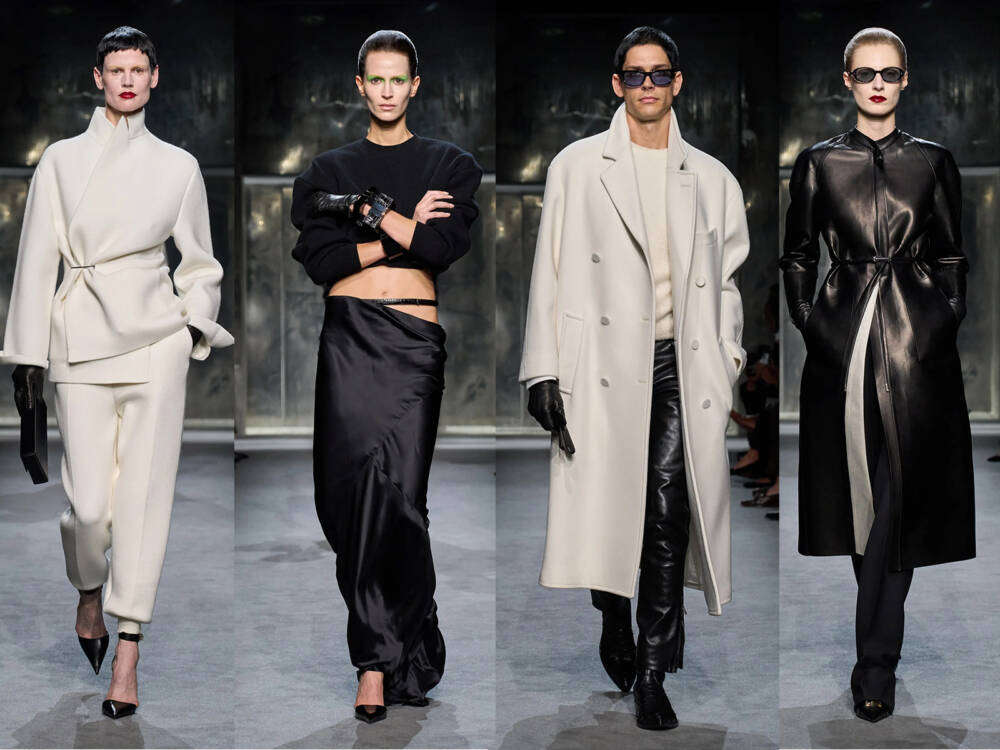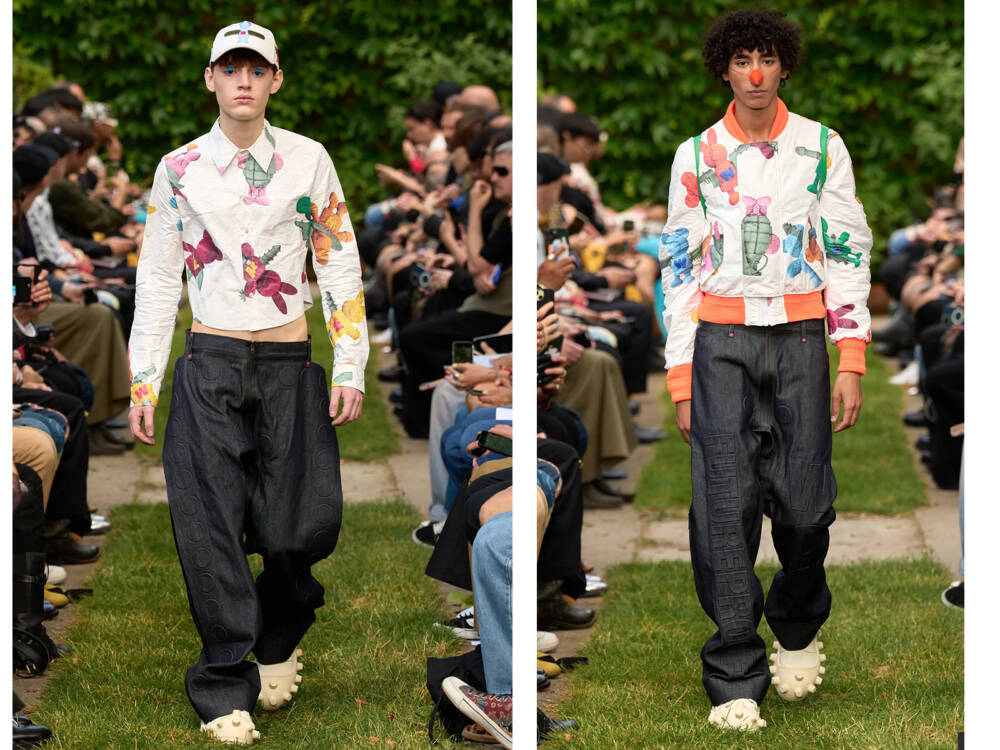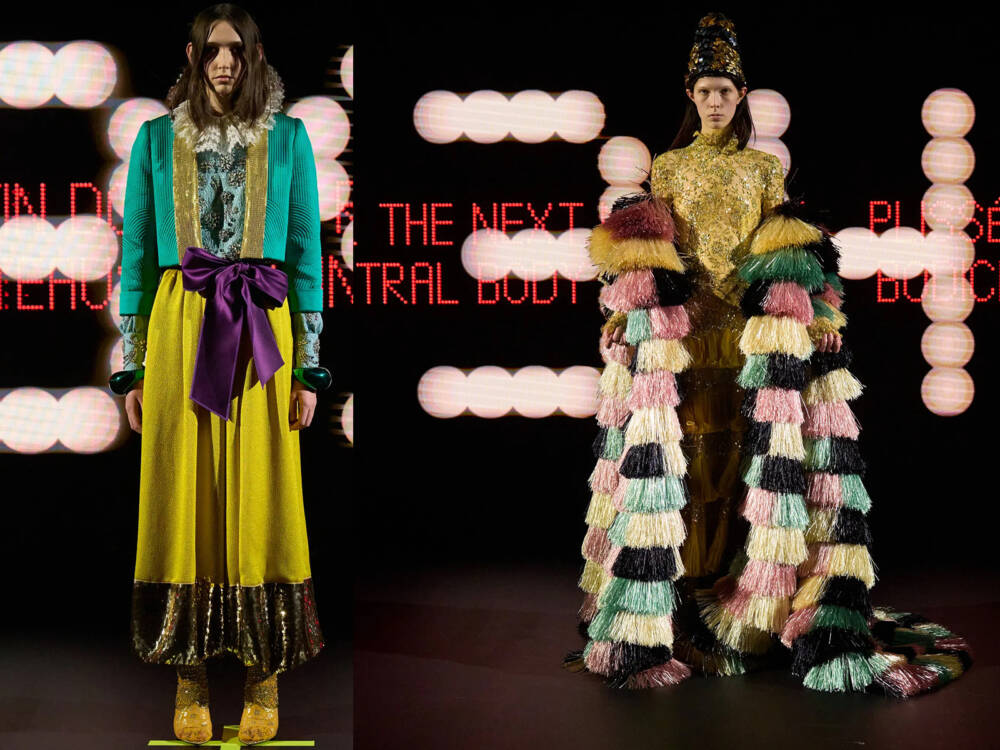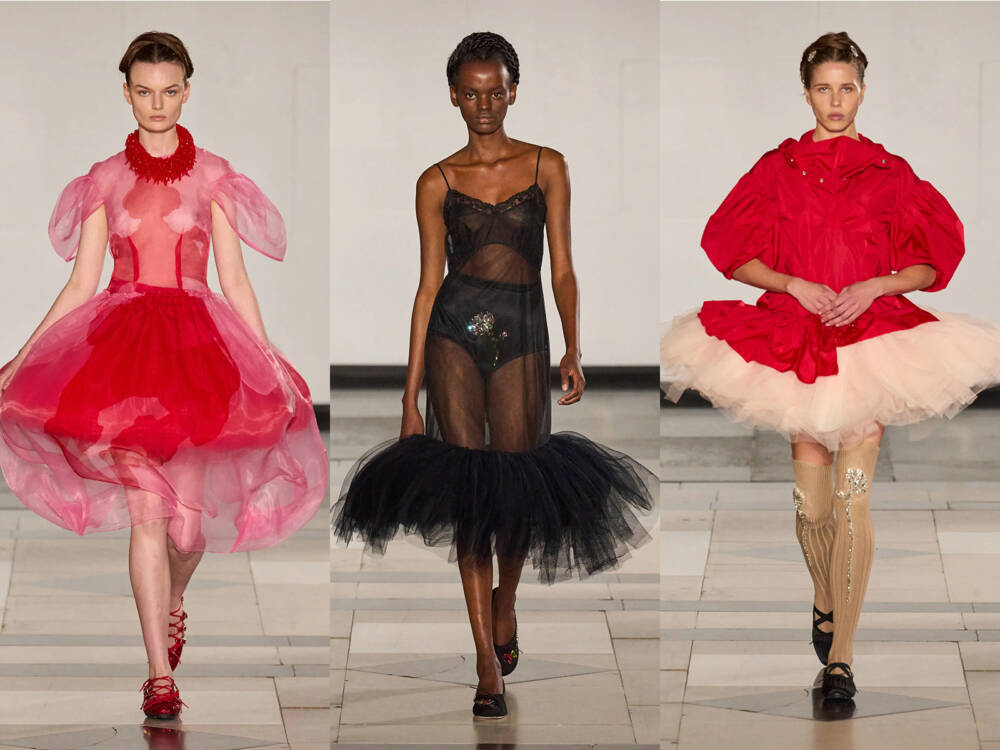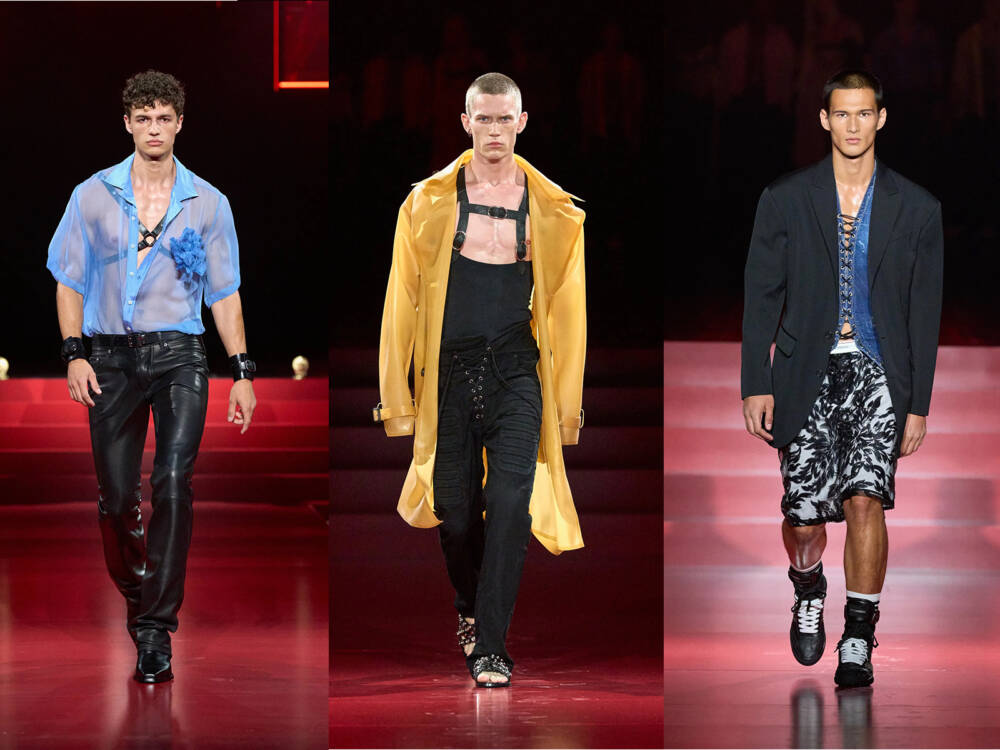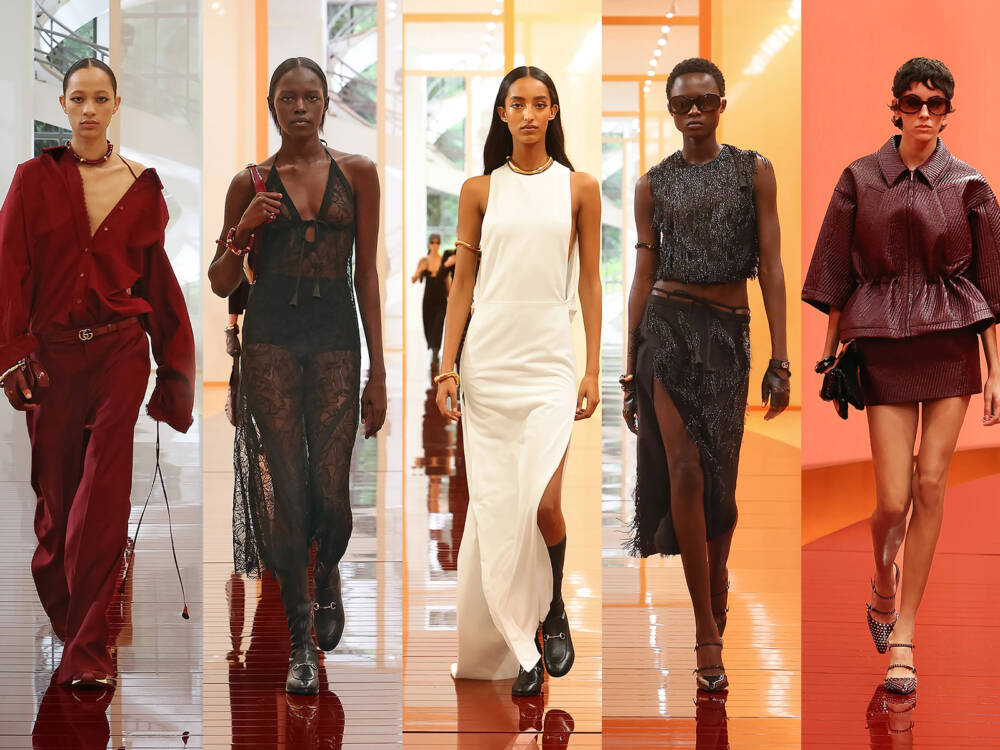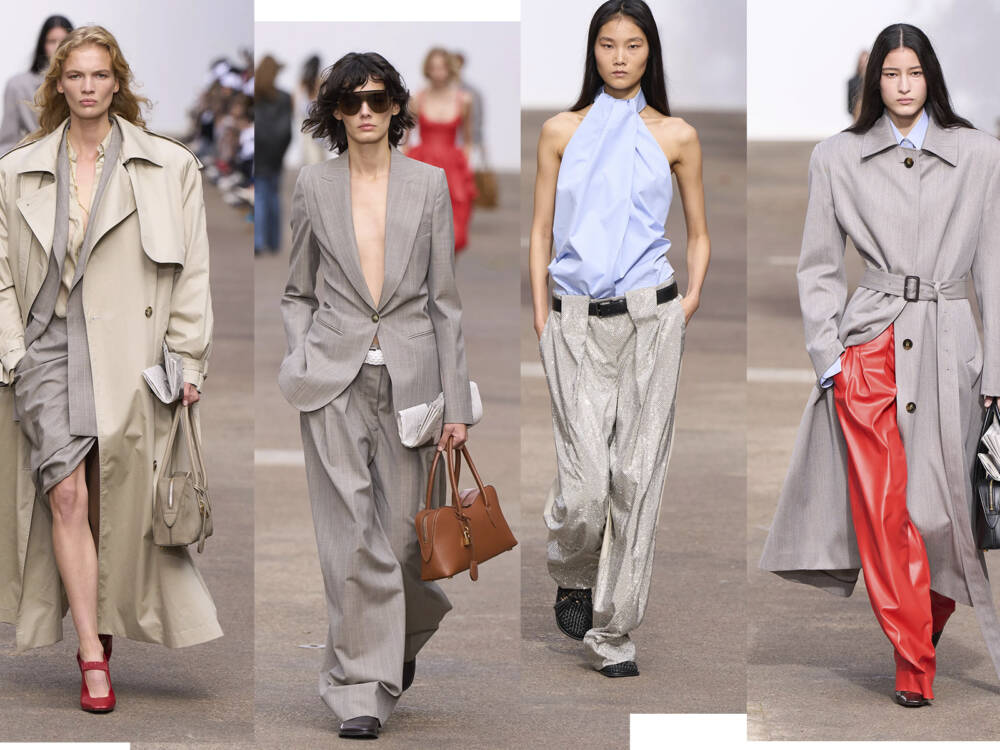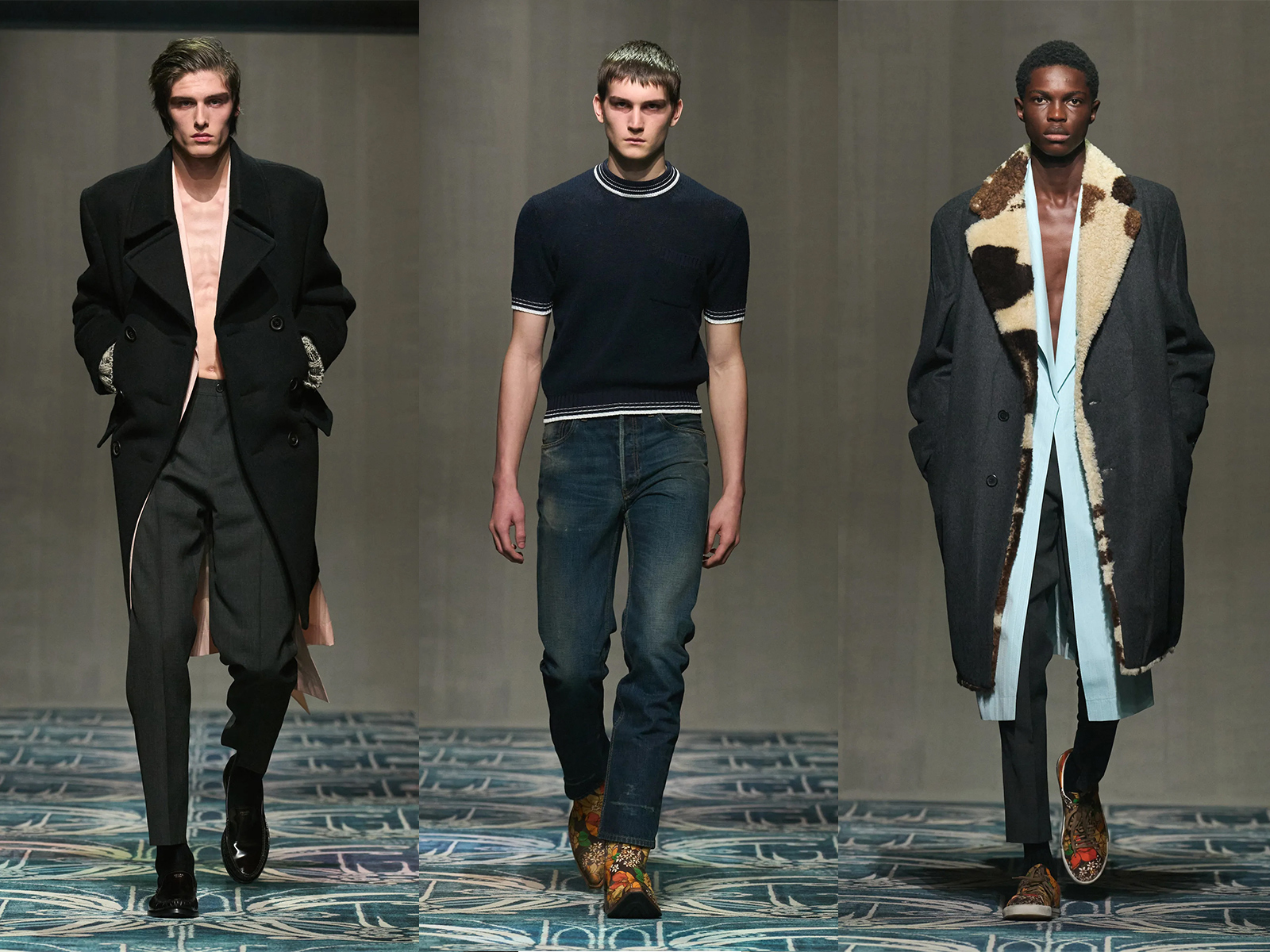
 Prada Men's FW 2025
Prada Men's FW 2025
At Prada’s Fall-Winter 2025 men’s show, co-creative directors Miuccia Prada and Raf Simons didn’t so much present a collection as stage an existential crisis—albeit one rendered in rich fabrics and knowing silhouettes. The show unfolded with the kind of cerebral dissonance the brand has long cultivated; this season, the designers appeared to be reckoning with a deeper fragmentation—one that reflects not just the current state of menswear, but the socio-political atmosphere at large.
In their show notes, Prada and Simons referenced a “collision of identities.” The collection, they said, was about “the simultaneity of experience and the confusion of expectations”—a man absorbing multiple signals at once, dressing in layers of reference, time, and persona. In short: the Prada man is breaking down, or perhaps breaking out—layering caveman furs over business shirts, tucking cowboy fringe into tailored trousers, and unapologetically ignoring any rule of cohesion. It was a kind of sartorial stream-of-consciousness—chaotic, at times discordant, but undoubtedly intentional.
Visually, the show opened with stripped-back tailoring—boxy, exaggerated blazers worn with nothing underneath, and trousers puddled slightly at the hem, setting a structured foundation. But almost immediately, the structure was interrupted: models emerged in pelts that evoked prehistoric man, followed by Western-style suede jackets, then prim collared shirts and neckties that spoke to mid-century office uniforms. The collection rapidly cycled through archetypes, making no effort to transition smoothly. Instead, it reveled in the abruptness—the jarring contrasts functioning as a commentary on the fractured modern psyche.
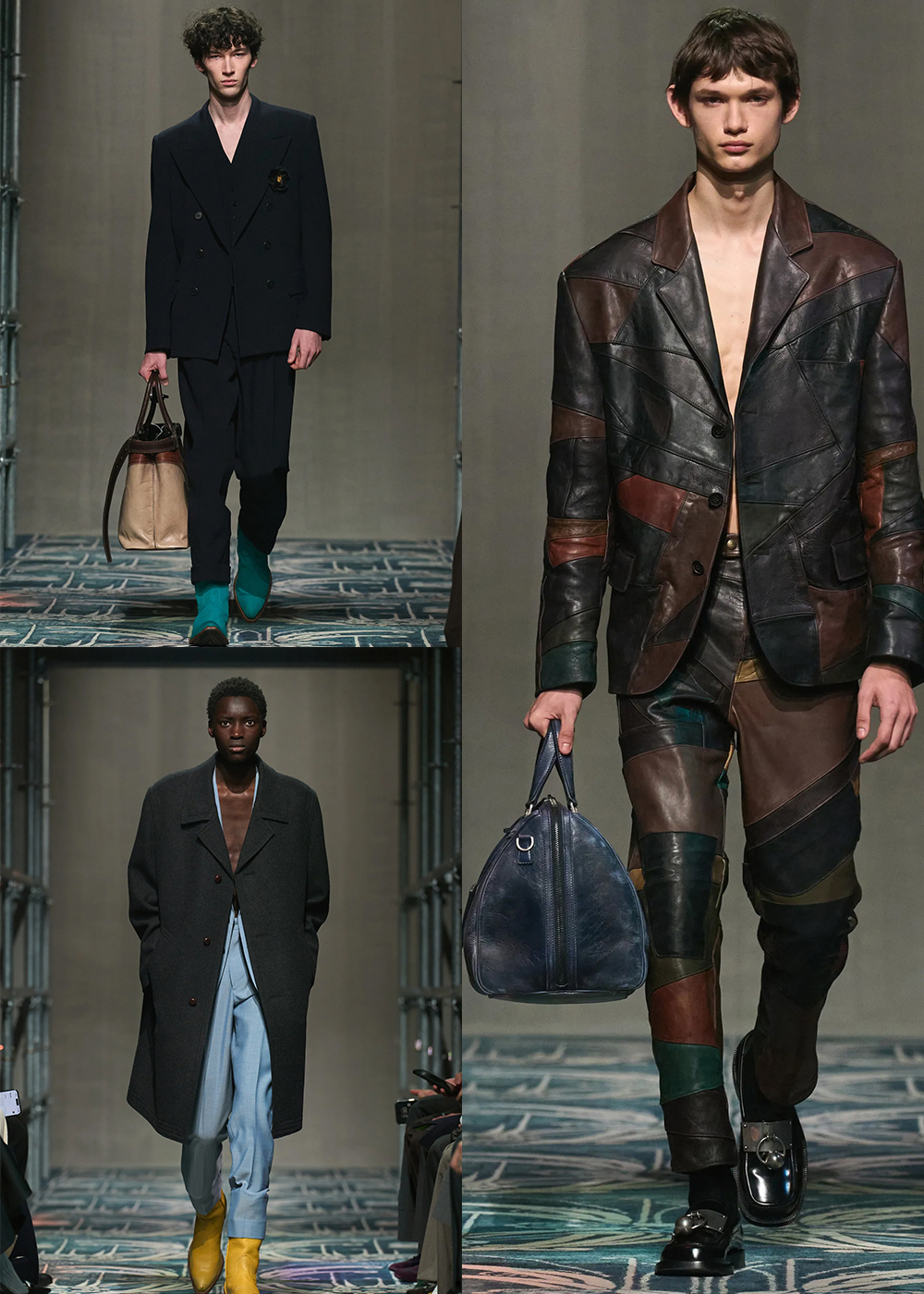

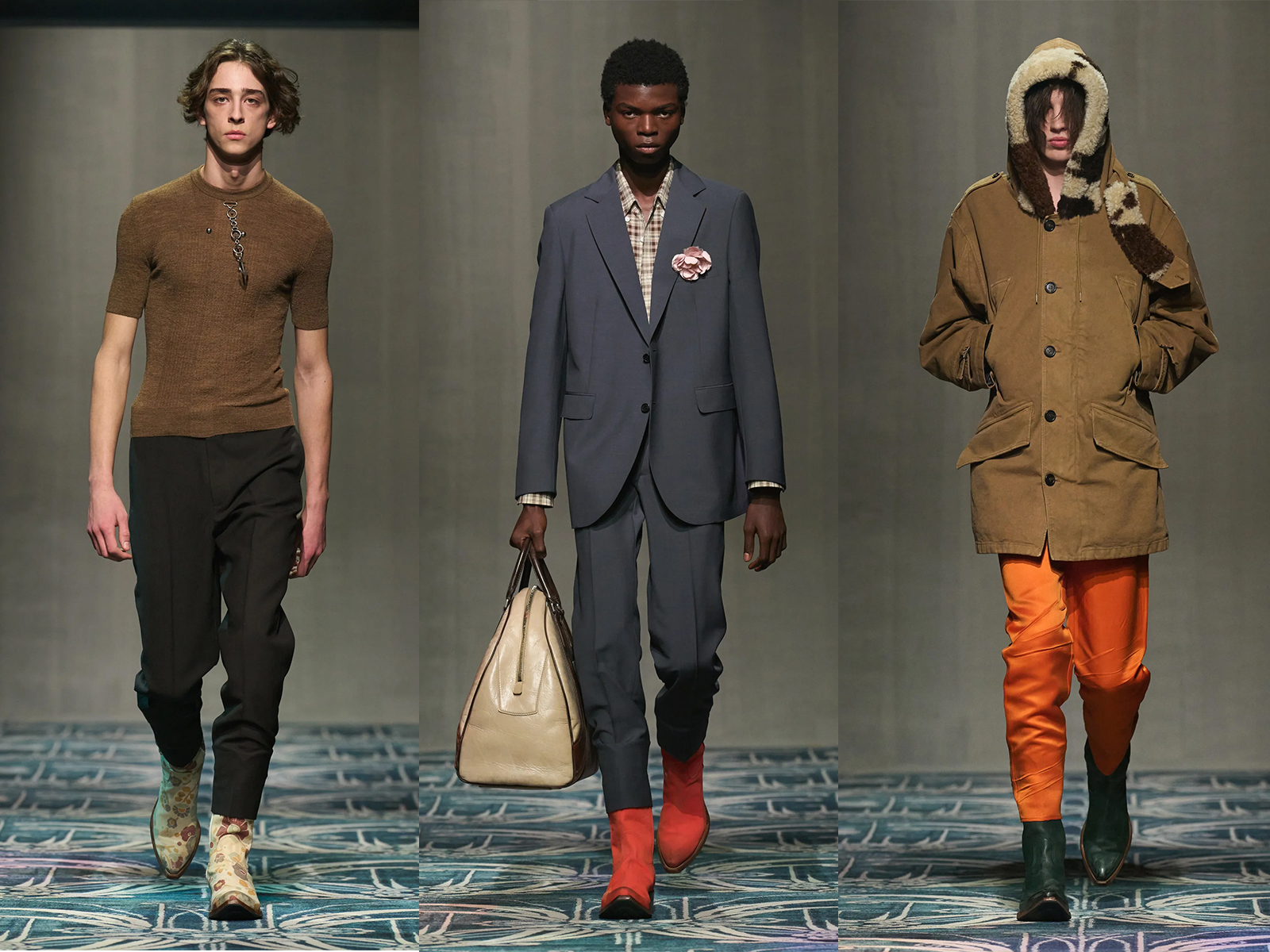

One of the strongest throughlines was the play on survival and protection, both literal and emotional. The caveman elements suggested a retreat to primal instincts in uncertain times. Layered leather belts, pouch-like accessories, and thick woven fabrics hinted at utility and self-reliance. Meanwhile, the tailored pieces—tight collars, crisp shirts—conjured the image of a man bound by social constraint. These weren’t competing ideas; they were coexisting ones, overlapping like browser tabs in the anxious mind.
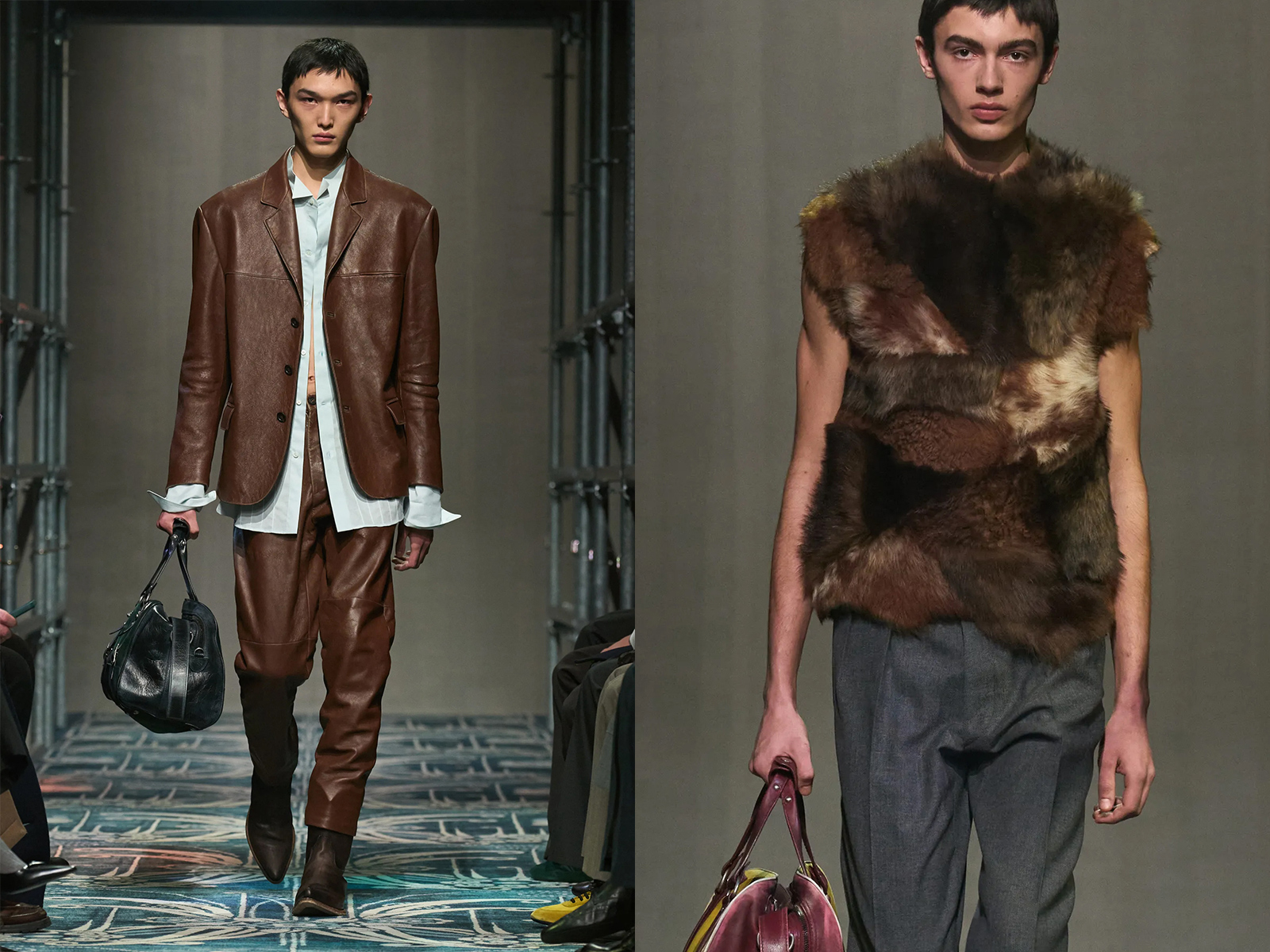

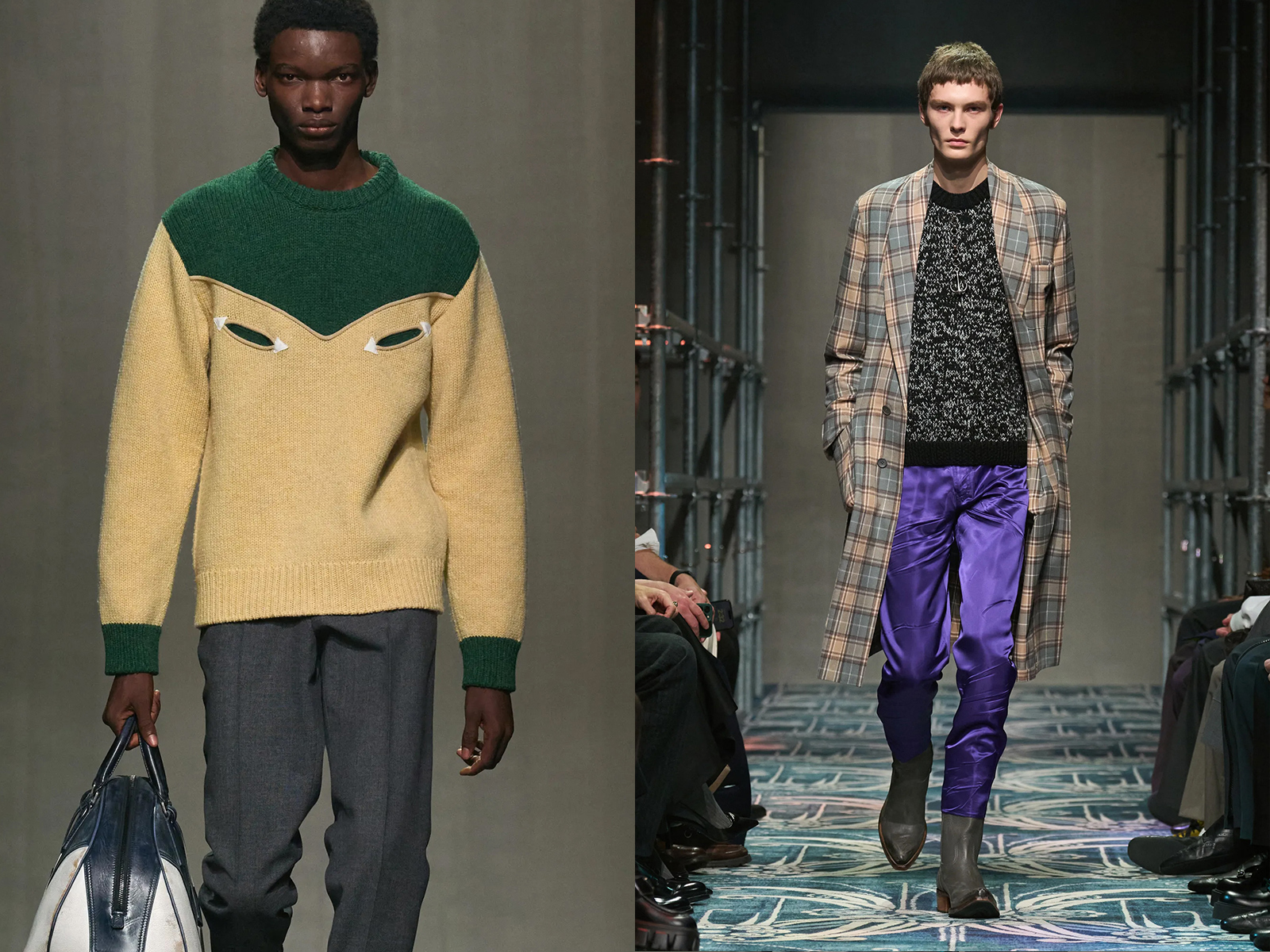

Several key trends emerged: Western wear is still resonant, but it was less nostalgic and more dystopian, paired with rubberized boots and rain-slicker materials. Oversized blazers and loose trousers marked the continued dominance of relaxed tailoring, while shirtless suiting and deep V-neck knits gestured toward sensuality and vulnerability. Perhaps most compelling were the hybrids—looks that merged pastoral textures with city polish, or formalwear with utilitarian gear—illustrating how fluidly Prada collapses binaries.
What holds the collection together is not aesthetics, but philosophy. There was no one Prada man on that runway—there were many. And in that multiplicity lies a powerful statement about masculinity today. Gone is the expectation of consistency or clarity. In its place: ambivalence, experimentation, and mood swings rendered chic. The collection is not interested in offering comfort or aspirational unity. Instead, it seems to say, “We know you’re confused. So are we. Here’s what that looks like.”
It would be easy to interpret this maximalist fragmentation as simply a play on identity politics, but Prada’s timing makes the statement deeper. The show lands during economic volatility and rising global conservatism, when men, especially, are being told to “get back in line,” to perform clarity, purpose, and authority. This collection does the opposite. It expresses a refusal to be pinned down or simplified. In its curated chaos, it proposes that multiplicity itself is a form of rebellion. The Prada man is in flux, and perhaps that’s the most accurate reflection of this moment in menswear—and in the world at large. Prada.
